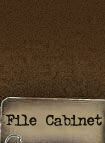 |
| |

Study Title: Locations of
Aid Stations of the 101st
Subject: During the
campaigns of the 101st Airborne
Division in France, The
Netherlands and Belgium 101st
Division's
sub-units commandeered all types
of buildings and used them as
Battalion and Regimental Aid
Stations. Battledetective.com
found the locations of many of
these aid stations.
Date: June 6th, 1944 - January, 1945
Location: Normandy,
Holland, Ardennes
Introduction: One of the
features of an airborne unit in
World War Two was that it had to
carry all its necessary
equipment into battle. Troopers
either had to jump with their
equipment, or have it flown in
by glider or dropped by means of
aerial delivery. This means that
airborne troops are lightly
equipped when it comes to
supplies of food, water and
ammunition. And most of all,
medical equipment. As a rule,
airborne troops fight behind
enemy lines. Not being able to
set up a field hospital in a
tent city under these
circumstances, sky soldiers have
to improvise. This applies to
the location of field hospitals,
dressing stations and aid
stations. These are some of the
most remarkable locations of
battalion, regimental and
divisional medical facilities of
the 101st Airborne Division in
the European Theater of
Operations.
|
| Normandy
Campaign
The 1st Airborne Surgical Team
and the 326th Airborne Medical
Company set up the first Surgical
Hospital of the Allied Forces in
Normandy.
On pages 73-77 of Philipe Jutras's
book Sainte-Mère-Église, Paras US 6
juin 44 we read:
“[…] it was necessary that the
airborne casualties be provided with
early, adequate surgical coverage.
This presented the Medical Corps wit
a new and challenging problem.
Members of the 3rd Auxiliary
Surgical Group made up the 1st
Airborne Surgical Team. This team
reported to the 101st Airborne
Division on March 19, 1944 and was
attached to the 326th Medical
Company. […] On may 30, the Medical
Company, with the attached team,
reported at the marshalling area in
Aldermaston, England, ready for the
invasion. […]Members of the surgical
team immediately set up a station in
the area of their landing and
received and treated casualties.
Three members stayed at this station
while two, before daylight,
proceeded to a preplanned chateau in
Hiesville, the site of the surgical
hospital, arriving by jeep at
approximately 0700 hrs. The chateau
was in German hands but was soon
neutralized by American
paratroopers. This was Chateau
Colombrière, said to have been built
in 1554; it was a large estate, then
occupied by the Cotelle family. It
had been selected by aerial
photographs and intelligence
information. It was a large stone
building with a courtyard and large
stables, good water supply and
shelter, and located in an
advantageous area for reception and
protection of casualties. With the
help of paratroopers, gliderists,
and the Cotelle, it was soon ready
for operation. Equipment was
assembled and before 0900, the First
Surgical Hospital of the Allied
Forces was in operation. Immediately
there was a steady flow of
casualties into the unit in every
conceivable type of conveyance: our
vehicles, captured enemy vehicles,
horse drawn carts and wagons,
hand-carried litters, some assisted
by their comrades, walking, etc…
The other members of the team soon
arrived. Operating rooms were set up
in the chateau, and major surgery
performed. Many combat men not yet
linked up with their units assisted
in setting up equipment and
arranging the chateau. Some
collected parachutes used for bunks
and blankets for the wounded. It
became a workable and efficient
field unit.
At about 2100 hrs, another glider
borne element of the medical company
arrived. Enemy resistance was still
strong, and there were severe
casualties in the group. The
sea-borne members of the medical
company had, with the help of
paratroopers, made their way through
a narrow corridor late on D-Day and
joined the unit.
With this additional personnel, five
surgical tables were in continuous
operation. Sections for triage,
shock treatment, plasma and blood
transfusions, operative and
post-operative treatment were
organized for handling all types of
head, thorax, abdomen and
extremities were operated in their
order of priority and kept in a
post-operative section under the
care of medical officers and medical
corpsmen. The parachutes from the
morning drop were used for blankets
and bunks. Whole blood was supplied
from lightly wounded and ambulatory
patients.
Enemy action continued in the area
sporadically both day and night, and
it was not until the third day that
snipers were cleared from the stable
area and surrounding grounds. A
small German medical unit was
captured nearby, and their equipment
and personnel were set up in the
courtyard near the stables and
allowed to treat German casualties.
They were allowed to allowed
assistance from our personnel when
available. The surgical personnel,
working continuously with but very
short breaks for K rations, coffee,
etc.
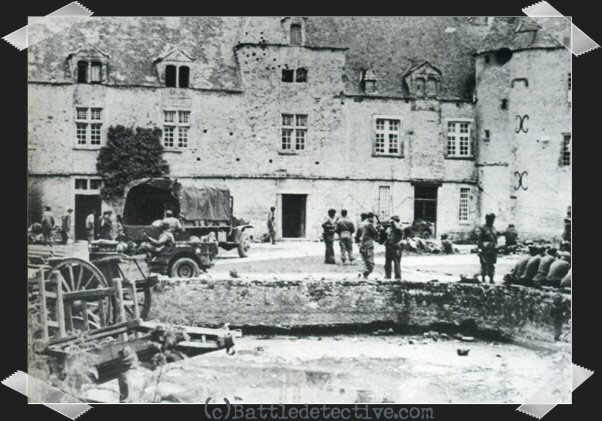
The chateau in use as
First Airborne Surgical Hospital.
Note German POW's sitting on wall on
the right.
In the afternoon of D+3, the fourth
day of operation, liaison contacted
the 42nd hospital which had moved to
an area nearby from the beach, and
our post-operative casualties were
moved to that unit.
At approximately 2345 hrs, on
Friday, June 9, a German bomber dove
upon the hospital releasing two
bombs. The first was a direct hit
upon the west part of the hospital
destroying a large part of it. The
second was a 2200 lb bomb which went
through the gable and landed just to
the rear. It was a two-minute
delayed-action bomb. This completed
the destruction of the building.
Over 20 were killed and about 60
were wounded. Many of the casualties
were medical personnel. The airborne
surgical team operating at the time
received only minor injuries. A unit
of German paratroopers was dropped
in following the bombing but was
neutralized by our forces by
morning.
More American medical units were now
landing by beach, and evacuation to
those unit became possible.
On June 10, the medical company and
surgical team were resupplied by air
drops and beach units. It then set
up operations about two kilometers
north of Hiesville and continued
operation until July 10, when the
101st division returned to England,
landing in South Hampton on July
13th.”
Today, only a monument marker
reminds us of the location of the
hospital:
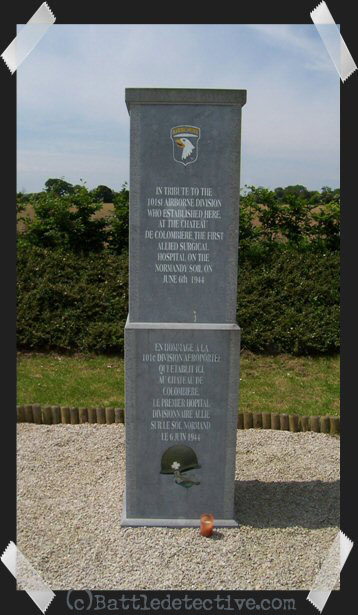
In June 2007, Dutch World War Two
collector and historian John de Neef
was also in Normandy. He submitted
this report of his visit to the
Normandy battlefields: "I have put
my metal detector to good use. I
have found many buckles and also a
piece of parachute tied to what I
assume is a bandage with blood
stains on it. I found it in a dry
ditch in front of the site of the
Colombrieres chateau. It is my
theory that the the parachute and
bandage were used to tie off
wounds."
This is a picture of John's
discoveries in the soil near the
former hospital:
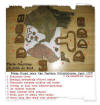
(click on image to
enlarge)
John's theory fits seamlessly in
Jutras's account about the use of
parachute cloth in the hospital. |
|
Battalion aid station of 2/501st
PIR in the church of Angoville-au-Plain
From the brochure of the Association
Sauvegarde de l’église d’Angoville
au Plain we acquired inside the
church:
"Colonel Ballard, Commanding
Officer of the 2/501st PIR sent his
adjutant. Lieutenant Edward
Allworth, along with two 2nd
Battalion Medics, Private Kenneth
Moore and private Robert Wright to
establish an aid station in the
church at Angoville.
For three days the fighting
continued in and around Angoville,
and the wounded kept coming into the
haven set up in Angoville church.
Wounded from both sides, and one
French child were brought in and
treated by medics Moore and Wright.
Three times Angoville changed hands
during the fighting, but the aid
station in the church held fast and
continued treating the wounded. The
first time the Germans recaptured
Angoville they stormed into the
church, their guns at the ready.
However upon entering they saw both
American and German wounded being
treated and quietly left the church,
leaving this medical sanctuary
alone. The church was not bothered
again.
This 11th Century Norman church
still holds services today, and
stands as a symbol of man’s humanity
in the midst of one of man’s
greatest horrors – war. Eighty men
and one child found refuge in this
church during those tumultuous day,
and evidence of their suffering is
still present today in the blood
stained pews and bullet marks about
the church. After sixty years the
church remains virtually unchanged
as it did during those monumental
days[…].”
Battledetective.com was in Angoville
and made this is impression of the
church today:
(click on images to
enlarge)
|
|

|
|
Monument in honor of medics Moore and Wright |
|

|
|
The church of Angoville-au-Plain |
|

|
|
Stained glass window in honor of medics Moore and Wright |
|
|
|

|
|
Stained glass window installed in 2006 |
|

|
|
Blood stains in the church benches |
|

|
|
Evidence that some men gave the utmost for today's freedom! |
|
|
|
|
Operation Market Garden and
The Island (Holland)
The 506th Regimental aid station
in Helena Hoeve near the Drop Zone
and Landing Zones of Son

Immediately after landing, medics of
the 506th PIR set up an aid station
for jump casualties. The barns of
the Helena Hoeve, a farm owned by
the Roefs Family, was located in the
middle of DZ's "B" and "C" and LZ
"W".
This
is the Helena Hoeve farm today:

(click on image to
enlarge)
|
|
|

|
|
|
|
|
|
This is a comparison that we made with the Helena Hoeve in use as an aid station and the building today. |
|
|
|
|
|
|
|
Divisional Hospital, run by the
326th AMC in the "Zonhove"
Sanatorium in Son
The 326th Airborne Medical Company,
which was the medical detachment of
the 101st Airborne Division, set up
the Divisional hospital in the
Zonhove Sanatorium in the center of
the Dutch village of Son, during
Operation Market Garden. They
started in the late afternoon of
September 17th 1944. Jump injuries
had already been taken care of at
the field hospital near the Drop-
and Landing Zones at Sonniuswijk.
Five operating rooms were laid out
inside the sanatorium with twenty
surgeons working in shifts. They
were mainly occupied with removing
shrapnel and treating gun shot
wounds. Some amputations had to be
executed. The surgeons worked around
the clock. In the 4 months that the
sanatorium was in use as a US Army
hospital, 2,600 Allied soldiers were
treated. The patients who did not
make it, were taken to the
temporary US cemetery at nearby
Wolfswinkel.
This photograph shows the Zonhove
Sanatorium in use as the 101st
Divisional Hospital with medics of
the 326th at the steps leading to
the front door. Note the Red Cross
flag on the flag pole in front of
the building:

Today, the building has been
demolished to make room for a
modern medical facility for the
elderly and the physically and
mentally challenged.
A modest monument in the park
surrounding the various pavilions
reminds of "Those who fell in
Sepember 1944":

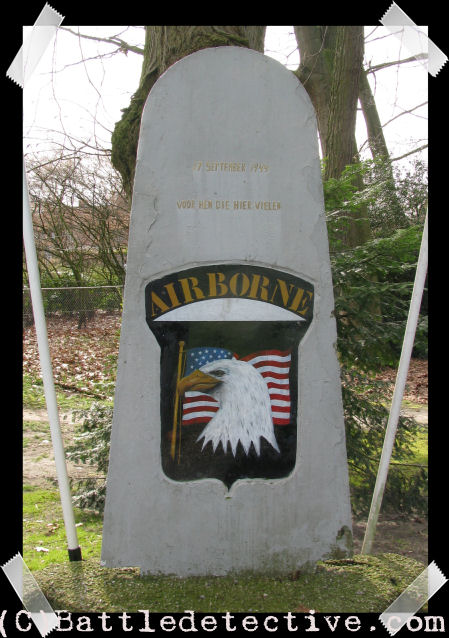
In 1979, 35 years after Operation
Market Garden, Board Member of the
Dutch Society of Airborne Friends
Kees Wittebrood, wrote the history
of the Zonhove Sanatorium serving as
the 101st's Divisional Hospital.
A copy of this history was provided
to battledetective.com, courtesy of
the late Mr. Wittebrood's family.
(click to open
complete history)

The
501st Regimental Aid Station in the
Nunnery in Veghel
The
501st Parachute Infantry Regiment
set up its Regimental Aid Station in
a convent of Franciscan Nuns on
Nieuwstraat. Together with the 50th
Field Hospital, the hospital treated
jump-injured paratroopers and combat
casualties as well as German
Prisoners of War.
These
are photographs taken in September
1944:
(click on images to
enlarge)
|
|

|
|
1 Paratroopers of the Colonel Johnson's 501st Parachute Infantry Regiment march passed the nunnery on Nieuw Straat |
|

|
|
2 Ambulances of 501st medics are parked on Nieuw Straat while cheerful citizens of Veghel celebrate their liberation. |
|

|
|
3 Carefully a wounded paratroopers of the 501st is taken into the hospital. He is brought in by car. Note the nurse carrying the soldier's M1 Garand rifle. |
|
|
|

|
|
4 German prisoners of war use a horse drwan hearse to carry a dead soldier (friend or foe is unknown to us) to the Veghel cemetery. |
|

|
|
5 German mortar bombs explode on Nieuw Straat in front of the Regimental aid station. |
|

|
|
6 Damage to the Veghel church and the convent. The German shelling caused many casualties, even among wounded German prisoners who were cared for in the convent. |
|
|
Photo's 1,2,3, and
6 courtesy of Erwin Janssen
of Eerde
|
This is the convent
today:

(click on image to
enlarge)
|
| In September 2004
Battledetective.com attended a
special lunch commemorating the 60th
anniversary of Operation Market
Garden. It was organized in the
convent for WWII veterans by the
municipality of Veghel. In the
courtyard we were the interpreter
for a conversation between a
Franciscan nun and veteran of the
501st, Frank Cipolla. The nun told
that she lived in the convent at the
time it served as a military
hospital.
Suddenly the Franciscan asked if
Frank was married. Not having an
idea where this would lead to, we
translated the question. Frank
told that he was single during Army
service but that he was married
after the war and was a widower now.
The nun explained her question: she
said that she had the most
compassion with the married men who
came from the United States to fight
so far away from their spouses.
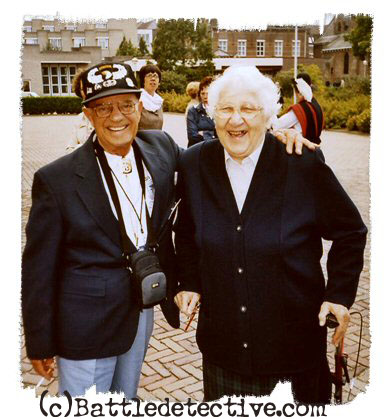
Reunion after 60
years. 501st veteran Frank Cipolla
meets a Franciscan nun
in the courtyard of
the Veghel convent.
She already lived in
the convent when it served as the
501st Regimental aid station.
|
| Battle of the
Bulge and the Ardennes (Bastogne) |
|
The 326th Airborne Medical
Company's Field Hospital, serving as
Divisional Aid Station for the 101st
Airborne until its capture on the
20th of December 1944.
Page 181
of
WWII 501st combat medic R. Edward
O'Brien's book With Geronimo Across
Europe reads: "The major medical
organization in the division was the
326th Airborne Medical Company. The
pecking order, front to rear was,
battalion aid station, regimental
aid station and divisional medical
company. [...] do you know where
the 326th is?" "Oh, it's at Road
Junction N4 and N22, about seven
miles northwest of here, don't
worry, it's well to the rear. [...]
We arrived at the road junction and
had been stopped by the crew of an
armored vehicle that was guarding
the junction. We turned right and
after going about four hundred yards
turned left off of the road and into
a field. There along a slight ridge
about two hundred yards off the road
was the medical company. I got out
of the truck and went into the
headquarters tent."
With these directions as a guide, we
found the location.
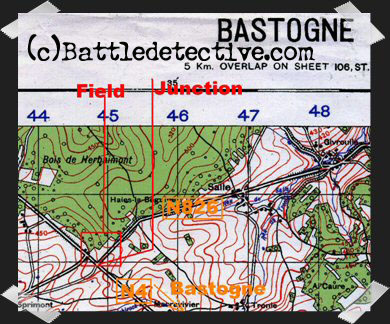 This is where
O'Brien turned in the field (right
where Battledetective's car is
parked): |
|
 |
|
This is the field
and the ridge:
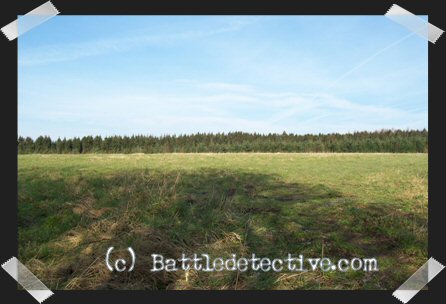 |
|
Right beyond the
ridge, just out of sight from the
road, someone had put some wooden
stakes and steel rods into the
ground. This person had draped an
olive drab tarp over it, thus
creating a tent-like object in the
field where once
a
complete medical
tent-city was. As if to say: You've
found it! |
|
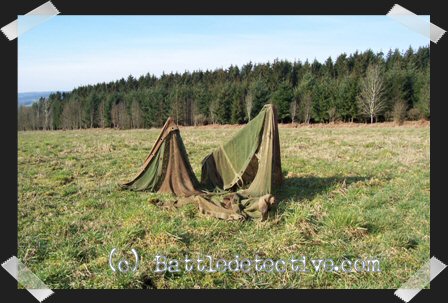 |
|
501st Regimental
Aid Station in Le Petit Seminaire in
Bastogne; later serving as Divisional
Aid Station.
Battledetective was in Bastogne and
fortunate enough to be allowed
inside the chapel of the Seminary by
a former teacher of the school.
Today the chapel is a
multifunctional building with class
rooms, a small theater, a print shop
and a storage room.
Page 180
of O'Brien's book reads: "The
seminary proper was occupied by the
regimental headquarters and the
chapel became the regimental aid
station. When I walked into the
chapel I saw straight ahead the main
alter and along the right side four
or five small alters. Later I
learned that the small alters were
used by student priests in earning
how to perform the mass ritual. The
center of the chapel was filled with
hard pews which were later removed
to make room for the wounded, As I
was looking at the stained glass
windows and thinking what a
wonderful place for an aid station I
was suddenly reminded by the first
sergeant why I was there."
This is what the altar looks like
today:
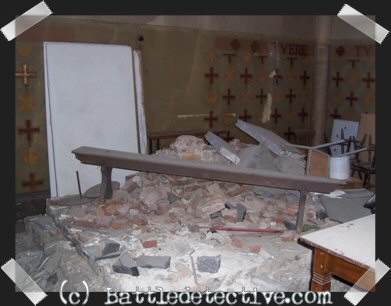 |
|
Operating Room Also in
O'Brien's book, on page 195: "The
major didn't hesitate and he ordered
the senior medical technician to
prepare an operating room. The
senior technician told me to come
with him, I guess I just happened to
be available, and he led me to a
large room behind the alter. It was
large, quiet, and out of sight of
the other patients."
The room is not behind the alter
but adjacent to it. It is now a
print shop:
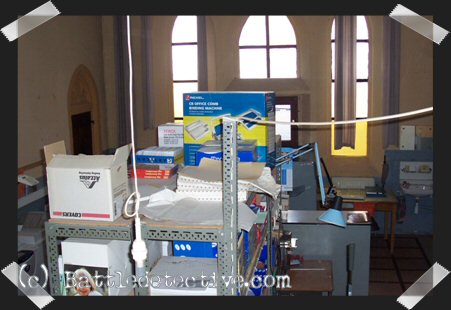 |
|
Battle Detective Tom is very proud
to have been allowed on the spot
were men
of the 101st Airborne Division were
treated for their wounds,
sustained in the Battle of the
Bulge:
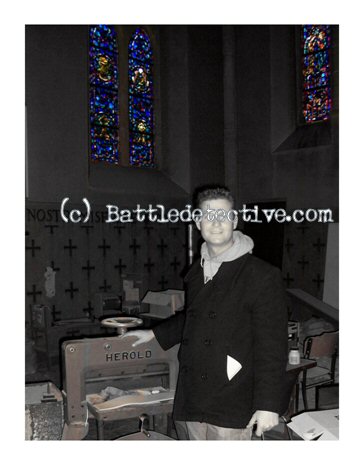 |
|
|
Back to Battle Studies
 |
|
|
|
|
|
| |
| |
| |
| |
|


